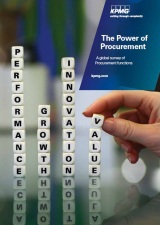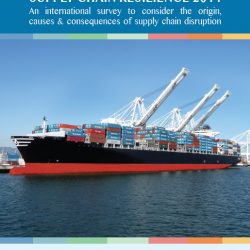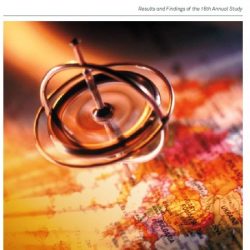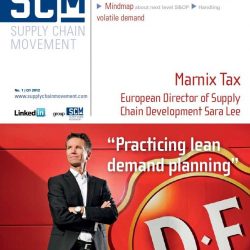Supplier Relationship Management (SRM) Research 2012-2013
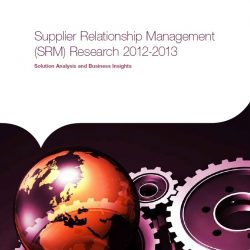
Due to the challenging economic conditions of the last few years, many CPO’s have reverted to the old school methods of procurement: achieving savings through squeezing suppliers and contract renegotiations. We feel this trend is unfortunate as the economic situation currently creates numerous opportunities for procurement organisations to achieve savings while creating long term, sustainable relationships with suppliers.
How can procurement organisations respond to the need for short-term savings while simultaneously focusing on long-term supplier development? We developed the “Seven Strategies for Future Procurement”, which is a practical framework to assist CPOs in creating best-in-class procurement organisations. Regardless of the maturity of the organisation, these strategies should be included in the strategic plans for the coming years.
Below is a high-level look at the “Seven Strategies for Future Procurement”:
Closed Loop Procurement
Many procurement organisations are still struggling to master the basics: spend visibility and, sourcing and contract compliance. Establishing closed loop procurement is a major achievement and an end goal in itself for most procurement organisations. This strategy involves optimising the basic infrastructure for procurement, from source to pay, in processes, organisation and supporting IT systems.
Hybrid Organisation Models
At a functional level, we see a trend towards hybrid organisational models that combine the benefi ts of central coordination with improved business collaboration. At a category level, we see further differentiation in organisational models depending on business, category and supply market specifi c characteristics. A one-size-fits-all organisation design is no longer good enough. Gain all of the benefi ts from different organisational models and shape your own future procurement organisation.
Supplier Value Management
Leading procurement organisations manage collaborative supplier relationships to extract more value from the supply base. Creating value is on every agenda, but capturing this value is diffi cult. Utilising a hybrid organisation model, you will be able to manage different categories in a diverse manner. It is our belief that innovation is the driver for creating value. Use Innovation Driven Procurement (IDP) to accelerate the pace of innovation within organisations by leveraging the innovative power of the supply base. (For IDP see Business Insights Chapter).
Supplier Risk Management
Increased dependency on external suppliers, volatility in raw material and energy prices, shortage of key materials, currency imbalances, and global fi nancial crises have all made companies recognise once again the importance of supplier risk management and overall resiliency in the supply chain. Looking at the outlook for 2012, we believe risk management will become even more important in the year ahead. Risk management will be central to procurement, combining risk, innovation, sustainability, preferred customer strategies, and supplier management.
End-to-End Supply Networks
Leading procurement organisations manage multiple supply networks that differentiate service characteristics by product/market segment. Managing complex supply networks requires pipeline visibility and alignment of planning and control across multiple tiers of suppliers.
Talent Development
For years we have seen that CPOs around the globe indicate that talent is the fourth biggest challenge for “marketing” procurement within their own organisation. We strongly believe that talent will be the key driver of success for procurement organisations in the years to come. Leading companies have recognised talent as the key enabler for further developing the supply management function, and are investing heavily in attracting, training and retaining top talent.
Technology Leverage
Leading supply management requires technology that is more user-friendly, provides real-time visibility, is better integrated, enables more effective collaboration with the supply base, and has more powerful analytic and simulation capabilities.
This last “strategy” for future procurement, in particular, is a key enabler for realising most of the other strategies. This is why the choices in technology should be an integral part of the procurement strategy. Our 2012 SRM survey will help to explore the technology development areas for your organisation.
As part of the procurement transformation business, we see it as our mission to deliver high performance and robust results to our clients. The results not only impact procurement departments, but also stretch to other business areas. To deliver quality results and benefits, we continually develop our thought leadership in the business marketplace. We track recent developments in Supplier Relationship Management (SRM) solutions, conduct surveys, and evaluate our previous initiatives in order to build a rich knowledge base of lessons learned from our client and supplier experiences.
We are pleased to present to you the Supplier Relationship Management (SRM) survey 2012-2013. It is interesting to see that over the last twelve years that we have been running this survey, the market for SRM is still growing and investing in these applications.
This year’s Supplier Relationship Management study consists of three parts:
- 1. SRM Research: Business Insights—our thought leadership from around the globe, related to the priorities of today’s Chief Procurement Officers (CPOs) and the Seven Strategies for Future Procurement.
- 2. SRM Research: Functionality Analysis—our view of the values you should expect from SRM applications.
- 3. Supplier Profiles: Profiles of all SRM suppliers who participated in our research.
The research and analysis is based on a series of questions designed to assess whether the software covers a specific set of functions within the SRM environment. A new item in our research is our independent view on the different vendors. We have learnt from previous client engagements that this is valuable information for package selection activities.
Apart from the survey, which gives you an overview of the major players in the market, we also want to share the experiences, issues and questions that we encounter on a daily basis as procurement professionals implementing and optimising SRM; these can be found in the ‘business insight’ chapter of our publication. We therefore asked our foremost colleagues to share their views and experiences of SRM, resulting in four expert opinion stories, each telling something about SRM and procurement, from different perspectives.



